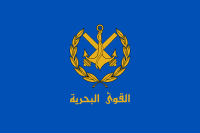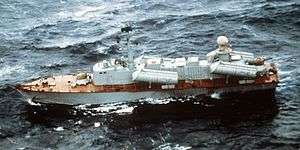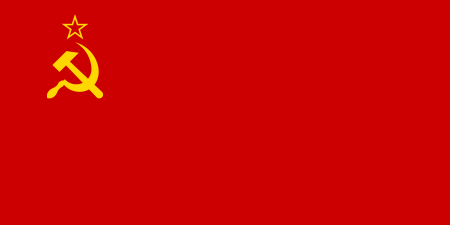Syrian Navy
The Syrian Navy, officially the Syrian Arab Navy (Arabic: البحرية العربية السورية), is the navy branch of the Syrian Armed Forces. It is under the Syrian Army's Latakia regional command with its fleet based in the ports of Baniyas, Latakia, Minat al Bayda, and Tartus. It is the smallest of the Syrian Armed Forces.
| Syrian Arab Navy | |
|---|---|
| البحرية العربية السورية | |
 Flag of the Syrian Arab Navy | |
| Founded | 1946 |
| Country | |
| Type | Navy |
| Role | Naval warfare |
| Size | |
| Part of | |
| Garrison/HQ | Damascus |
| Equipment | 19 missile boats 14 patrol crafts 7 minesweepers 3 landing crafts |
| Commanders | |
| President of Syria | Marshal Bashar al-Assad |
| Minister of Defense | Gen. Ali Abdullah Ayyoub |
| Chief of Naval Staff | Vice Admiral Yasser al-Haffei |
History
In 1950, the Syrian Navy was established following the procurement of a few naval vessels from France. The initial personnel consisted of army soldiers who had been sent to French naval academies for training.[1]
During the Yom Kippur War (1973 Arab–Israeli War) the Israeli Navy sank five Syrian naval ships without a loss during the Battle of Latakia. As a result, the Syrian Navy remained in port for the rest of the conflict.[2]
Tartus

Tartus hosts a Soviet-era naval supply and maintenance base, under a 1971 agreement with Syria. The base was established during the Cold War to support the Soviet Navy's fleet in the Mediterranean Sea. Since Russia forgave Syria three-fourths of its $13.4 billion Soviet-era debt and became its main arms supplier, the two countries have conducted talks about allowing Russia to develop and enlarge its naval base, so that Russia can strengthen its naval presence in the Mediterranean.[3] Amid Russia's deteriorating relations with the West, because of the 2008 Russo-Georgian War and plans to deploy a US missile defense shield in Poland, President Assad agreed to the port’s conversion into a permanent Middle East base for Russia’s nuclear-armed warships.[4] Since 2009, Russia has been renovating the Tartus naval base and dredging the port to allow access for its larger naval vessels.[5]
Equipment
- Missile boats:


- Patrol craft


- Amphibious warfare vessels:

- Mine warfare vessels :



- Naval aviation:
- 618th Maritime Warfare Squadron
Coast defence





See also
References
- "Syrian Arab Navy". GlobalSecurity.org.
- "The Battle of Latakia". Jewish Virtual Library.
- Weitz, Richard (2010). Global security watch--Russia : a reference handbook. Santa Barbara, Calif.: Praeger Security International. p. 30. ISBN 978-0-313-35434-2.
- "Big Russian flotilla led by Admiral Kuznetsov carrier heads for Syrian port". DEBKAfile. 21 August 2008. Archived from the original on 23 August 2008. Retrieved 7 October 2012.
- "INSS: Syria Report" (PDF). Institute for National Security Studies. Archived from the original (PDF) on 2 October 2011. Retrieved 3 September 2011.
- "Syrian 'warships shell port city of Latakia'". Al Jazeera. 14 August 2011.
- C-802 in Syria 7/7/2012 (video)
- "Syria Receives More Russian SS-N-26 Yakhont Anti-Ship Cruise Missiles". May 18, 2013.
